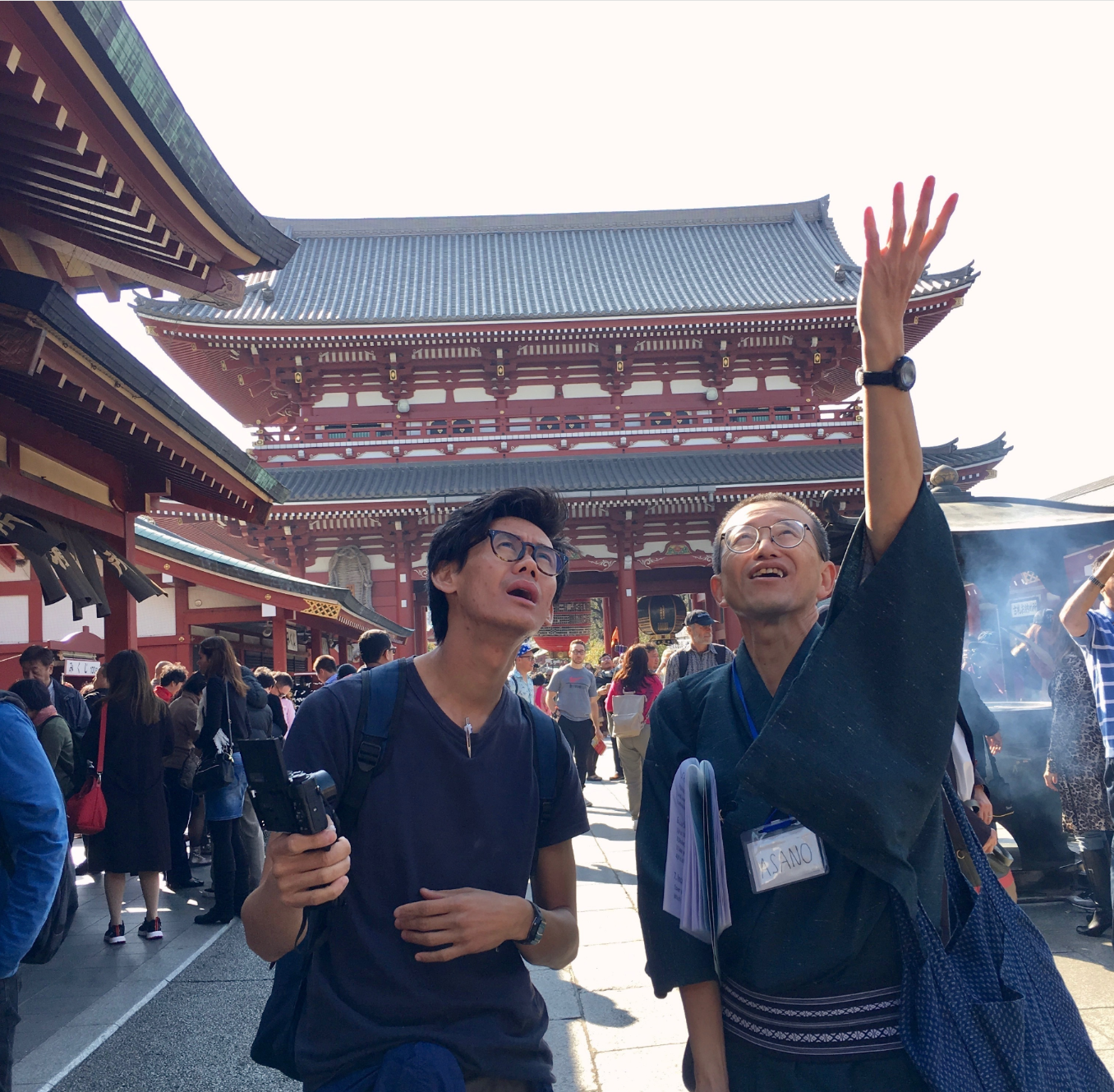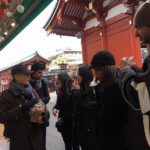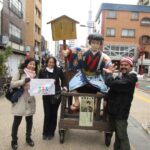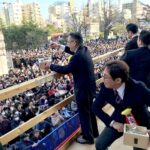Thank you for joining our tour in Asakusa on January 28. We had seven guests from Singapore,Chile,America and China. It was cloudy and cold, but nevertheless I hope all of you enjoyed the atmosphere of old Tokyo.
February 3 is Setsubun,literally splitting the season when Mamemaki or bean-throwing festival is held at Sensoji Temple. It is the day before the first day of spring. Actually it is New Year’s Eve according to the Old calendar system. On this day people throw beans to ward off demons and welcome good fortune.
(Photoes:The Asakusa Tourism Federation 365 ASAKUSA)
This tradition dates back over 1,000 years. In Japan it is believed from ancient times that demons come out in the changing of the seasons. Hence, there were year-end ceremonies to cleanse away all the evils and diseses of the previous year prior to the new year at the Imperial Court in Kyoto during the Heian period. Then this event developed into bean-throwing ritual since beans were believed to have the power to dispel evil spirits.
Bean-throwing festival is not a national holiday but a major event in February throughout the country. It is held at home but many people gather at temples and shrines. People shout ‘Demons out ! Fortune in!’ but here at Sensoji Temple just ‘Fortune in!’because there is no demon around its Buddhist deity. A number of the invited celebrities such as kabuki actors and comedians join the ceremony and throw roasted beans to the crowd. People get crazy to catch the beans with bags. In order to get ‘Fortune in’, they have to catch sufficient beans so that they can eat as many as their age.
(Photoes:The Asakusa Tourism Federation 365 ASAKUSA)
The reason for roasting beans is to prevent any of the thrown beans from sprouting which is considered bad luck. In some areas peanuts are thrown in stead of beans, because they are cleaner and easier to be picked up. Also some people eat a long sushi role,ehomaki while facing the lucky direction of the year.
Sensoji is the first temple to hold this event in a large scale in Edo, the former name of Tokyo and approximately 100,000 people appear at the annual festival. If you happen to be in Tokyo or Asakusa on February 3 in the afternoon, it will be an interesting experience for you to watch the exciting event at Sensoji Temple.
(posted by Yoshi)











